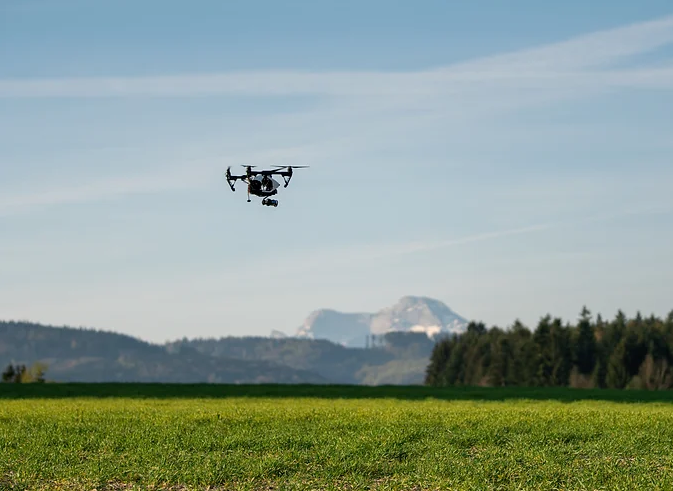Are you ready to take flight into the exciting world of aeromodelling? Imagine the thrill of piloting your very own radio-controlled (RC) aircraft, soaring through the skies with precision and grace. Whether you're a hobbyist looking for a new adventure or an aviation enthusiast seeking to delve into the intricacies of remote-controlled aviation, building your first RC plane is an exhilarating endeavor that combines engineering, creativity, and pure enjoyment.
In this comprehensive guide, we'll walk you through the process of constructing your very own radio-controlled aircraft, introducing you to the fascinating realm of aeromodelling. From selecting the right components to mastering the art of assembly, we'll cover everything you need to know to embark on this captivating journey.
Why Aeromodelling?
Aeromodelling, the art of designing, building, and flying miniature aircraft, has captivated enthusiasts of all ages for decades. It offers a unique blend of technical know-how, craftsmanship, and a passion for aviation, making it an engaging and rewarding hobby. By constructing your own RC aircraft, you can experience the satisfaction of turning a collection of components into a functional flying machine, tailored to your preferences and style
Basics of aeromodelling for Radio Controlled Plane enthusiasts
Discover the interesting global aeromodelling of Radio controlled planes! This thrilling hobby combines engineering, creativity, and the joy of flying miniature aircraft. Aeromodelling involves designing, building, and piloting model airplanes, helicopters, gliders, and drones. With a wide range of categories to choose from, such as scale models, acrobatic planes, soaring gliders, and high-tech drones with cameras, aeromodelling offers endless opportunities for exploration and enjoyment. Whether you're a beginner or an experienced hobbyist, the world of aeromodelling awaits with excitement.
Exploring Different Types of Flight for Radio-Controlled Planes
Embark on an exploration of flight, a phenomenon that has revolutionized human travel and exploration. Flight refers to the ability of objects to move through the air, and it encompasses various types. The primary distinction in flight is between heavier-than-air and lighter-than-air aircraft.
Heavier-than-air flight includes airplanes and helicopters, which rely on the principles of aerodynamics and propulsion to generate lift and remain airborne. These engineering marvels enable controlled and sustained movement through the skies.
On the other hand, lighter-than-air flight includes aircraft such as hot air balloons and airships. By utilizing gasses like helium or hot air to create buoyancy, these majestic vessels float gracefully through the atmosphere, providing a serene and breathtaking aerial experience. Whether it's the power and agility of airplanes or the tranquil beauty of hot air balloons, flight in its various forms continues to captivate our imagination and redefine the limits of human exploration.
Essential Parts of a Radio-Controlled Plane
Let's dive into the fascinating world of aircraft/Aeromodelling and discover the essential components that allow them to soar through the skies. Every airplane consists of several key parts that are integrated to ensure safe and efficient flight. The main components include the fuselage, which serves as the primary structure and houses the crew, passengers, and cargo. The wings, crucial for generating lift, provide the necessary aerodynamic forces. Power is supplied by engines, whether they are jet engines or propellers, which propel the aircraft forward. To control the airplane's attitude and direction, there are control surfaces such as ailerons, elevators, and rudders. Landing gear, including wheels or skids, facilitates takeoff and landing. Finally, the tail section includes the horizontal stabilizer and vertical fin, aiding in stability and control. Each component plays a vital role in the intricate ballet of flight, showcasing the incredible ingenuity behind these remarkable machines.
The Basics of Aerodynamics for Radio-Controlled Plane Enthusiasts
Aerodynamics is the study of how air interacts with solid bodies, particularly airplanes, and it plays a crucial role in aviation and engineering. Understanding the fundamental principles of aerodynamics is essential for optimizing flight performance. At its core, aerodynamics revolves around two key concepts: lift and drag. Lift is the force that allows an aircraft to overcome gravity and stay airborne, generated by the shape and design of the wings. Drag, on the other hand, is the resistance encountered by an aircraft as it moves through the air and affects its speed and efficiency. By comprehending the relationship between lift, drag, and design factors like airfoils and streamlined shapes, you can gain insights into how we conquer the skies. Delve into the basics of aerodynamics to unlock a wealth of knowledge and enhance your understanding of flight.
Understanding Airfoil Types and Nomenclature in Radio Controlled Plane Aeromodelling
Airfoils are specially shaped components that enable the generation of lift in aircraft wings and other aerodynamic systems. An airfoil features a streamlined shape with a curved top surface and a flatter lower surface. This design creates a pressure difference between the two surfaces, resulting in lift when air flows over it. There are different types of airfoils, including symmetrical airfoils that have identical top and bottom surfaces, and cambered airfoils that have a curved top surface and a flatter bottom surface. The terminology associated with airfoils includes chord length, which is the distance from the leading edge to the trailing edge, and the angle of attack, which refers to the angle between the airfoil's chord line and the direction of the oncoming airflow. These factors influence the lift and drag characteristics of an airfoil. Understanding the intricacies of airfoils and their nomenclature is essential for optimizing the performance and efficiency of aircraft design and operation.
Control Surfaces for Radio Controlled Plane Maneuverability
Control surfaces play a vital role in the maneuverability and control of radio-controlled planes. These movable surfaces on an aircraft enable pilots to adjust their attitude and change direction during a flight.
The primary control surfaces include ailerons, elevators, and rudder. Ailerons, located on the trailing edge of the wings, control the roll of the aircraft, allowing it to bank and turn. Elevators, situated on the tail section, control the pitch, enabling the aircraft to climb or descend. The rudder, also located on the tail, controls the yaw, helping the aircraft maintain stability and change direction. Additionally, some aircraft may feature secondary control surfaces such as flaps and spoilers, which enhance lift, increase drag, and improve overall performance during takeoff, landing, and certain flight conditions. The precise and coordinated movement of these control surfaces is essential for safe and precise flight control. Understanding the functionality and operation of control surfaces is vital for pilots and aviation enthusiasts alike.
Key Components Required to Build a Radio-Controlled Plane
Building a radio-controlled plane requires several key components that come together to create a thrilling flying experience. These components include:
Coroplast: A lightweight, durable, and versatile material made from corrugated plastic, commonly used for constructing the plane's body and wings due to its affordability and ease of use.
Motors: Electric motors provide the necessary thrust for propulsion. Brushless motors are popular for their efficiency, power, and longevity, making them a common choice for radio-controlled planes.
Servos: Small devices that convert electrical signals from the receiver into precise mechanical movements. Servos control the movement of the control surfaces, such as ailerons (wing flaps) and elevators (tail flaps), allowing for precise maneuverability.
Battery: A rechargeable battery pack, usually a lithium polymer (Li Po) battery, powers the motor and servos. The battery's capacity and voltage rating should be chosen to match the power requirements of the plane.
Transmitter: Also known as a radio controller, the transmitter is a handheld device held by the pilot to send control signals to the plane. It typically operates on radio frequencies and allows the pilot to control various functions, such as throttle, steering, and control surface movements.
Receiver: A device installed in the plane that receives the control signals from the transmitter and relays them to the servos. It receives and interprets the signals to convert them into physical movements, controlling the plane's actions.
ESC (Electronic Speed Controller): An electronic device that regulates the speed and power distribution from the battery to the motor. It controls the motor's speed, direction, and acceleration, enhancing the pilot's control over the plane.
Propellers: Rotating blades attached to the motor shaft that create thrust by pushing air backward. They come in various sizes and pitches, and the selection depends on factors such as the plane's weight, motor power, and desired flight characteristics.
It's essential to choose the right kit for your skill level and interests. Beginner-friendly kits typically come with pre-cut parts and detailed instructions, making it easier for newcomers to get started. These kits from AEROGO often include everything you need to build and fly your first model airplane, from the necessary materials to the required electronics.
As you gain experience, you may want to explore more advanced kits that allow for customization and experimentation. These kits usually require more assembly and might not include all the components, giving you the freedom to choose your own motor, servos, and other peripherals. This level of customization allows you to tailor your model to your specific preferences and performance requirements.
It's also worth considering the type of aircraft you want to build. Are you interested in vintage warbirds, sleek jets, or acrobatic stunt planes? Each type of model has its own characteristics and flying style, so it's important to choose one that aligns with your interests and skill set.
Step-by-Step Guide to Fabricating a Radio-Controlled Plane
Fabricating a radio-controlled plane involves a systematic approach to transforming raw materials into fully functional aircraft. Here's a step-by-step guide to the fabrication process:
Design: Begin by selecting or creating a design that encompasses the desired specifications, including size, wing configuration, and aerodynamic principles. Utilize available resources, such as professional plans or computer-aided design software, to create an accurate blueprint.
Material Selection: Carefully choose suitable materials for the construction, considering factors such as weight, durability, and structural integrity. Common options include foam, balsa wood, composite materials, or Coroplast, each offering unique advantages and considerations.
Cutting and Shaping: Employ precise cutting techniques, utilizing advanced tools like expertly wielded hand tools or lasers, to accurately shape the various components of the plane. Achieve precise dimensions and aerodynamic profiles.
Fabrication and Assembly: Assemble the individual components, including wings, fuselage, tail, and control surfaces, using appropriate adhesive. Ensure proper alignment, fit, and reinforcement of structural integrity.
Wing Fabrication:
The wing fabrication process is a crucial factor in the performance of radio-controlled planes. The design and construction of the wings directly impact the plane's flight capabilities, including lift, stability, and control. Choosing the right materials, such as lightweight foam or balsa wood, and paying attention to details like wing profile and airfoil shape, can optimize aerodynamics and reduce drag. With precision cutting, shaping, and assembly, the wings are crafted to ensure a smooth and thrilling flight experience.








Fuselage Fabrication:
When it comes to RC plane construction, fuselage fabrication is critical in deciding the overall performance and durability of the aircraft. The fuselage, often known as the plane's primary body or structure, stores critical components such as the engine, electronics, and payload. A multitude of procedures and materials can be used to create a dependable and efficient fuselage and foam cutting are all common fabrication procedures. Furthermore, lightweight yet strong materials like as balsa wood, carbon fiber, and composite laminates are widely employed. RC plane enthusiasts may produce a well-built fuselage that adds to optimal flight performance and enriches the entire flying experience by using these fabrication techniques and materials.


Tail Fabrication:
Tail fabrication plays a crucial role in the construction of RC planes, and one versatile material that can be utilized for this purpose is coroplast. Coroplast, a corrugated plastic sheet, offers several advantages for tail fabrication in RC planes. Its lightweight nature ensures minimal impact on the overall weight of the aircraft, enabling better maneuverability. Coroplast is also highly durable, providing excellent resistance against impacts and vibrations. Fabricating a tail using coroplast involves cutting the material to the desired shape and then bending or scoring it to achieve the necessary curvature. This flexibility allows for easy customization and tailoring to specific design requirements. Additionally, coroplast is readily available and affordable, making it an attractive option for RC plane enthusiasts looking to create a well-built and cost-effective tail section that enhances stability and control during flight.



Electronics Installation: Expertly install the electrical components, including the motor, servos, receiver, ESC, and wiring harnesses. Employ meticulous cable management techniques, incorporating appropriate insulation and shielding to prevent interference and ensure optimal performance.
Control Linkages: Establish robust and reliable control linkages that connect the servos to the control surfaces, facilitating precise and responsive maneuverability. Carefully adjust tension, alignment, and throw to achieve optimal control surface deflection.
Testing and Adjustments: Conduct rigorous ground tests and controlled flight tests to evaluate the plane's stability, balance, and control response. Make necessary adjustments to the control surfaces, center of gravity, or control settings to optimize performance and ensure a safe and enjoyable flying experience.
By following these steps and paying attention to detail, you can fabricate a radio-controlled plane that meets your desired specifications and provides a thrilling and rewarding flying experience.
Conclusion:
The thrill of flying radio-controlled aircraft is combined with engineering, creativity, and a thrilling hobby called aeromodelling. Understanding the fundamentals of aeromodelling, flight types, components, aerodynamics, airfoils, control surfaces, and the fabrication process is essential for a satisfying experience, whether you're a novice or an experienced hobbyist. Aerogo is a well-known business when it comes to high-quality goods and services for radio-controlled aircraft. They specialize in offering high-quality tools, kits, and accessories designed especially for fans of radio-controlled aircraft. By working with Aerogo, you have access to first-rate tools that improve your flying experience and advance your sport. Begin learning about aeromodelling with Aerogo, and see your radio-controlled aircraft soar through the skies with dexterity and excitement.
"Achieve New Heights: Build and Fly Your Own RC Plane with Our Kits"
Introducing the perfect DIY kit for your dream RC plane! Our meticulously curated selection includes a wide range of options to suit every skill level and preference. Whether you're a seasoned enthusiast or a novice pilot, our kits offer the highest quality components and detailed instructions to ensure a smooth and rewarding building experience. Don't miss out on the joy of crafting your own flying marvel! Click here to explore our collection and add your favorite kit to your cart on our website: https://www.aerogo.live/shop. Happy building and happy flying!
#RCaircraft#DIYRC#RCmodel#HomemadeAircraft#RCaviation#RCbuild#AircraftBuilding#RCenthusiasts#DIYaviation#ModelAircraft#RCflying#RCbeginner#RCaeromodelling






























Opmerkingen